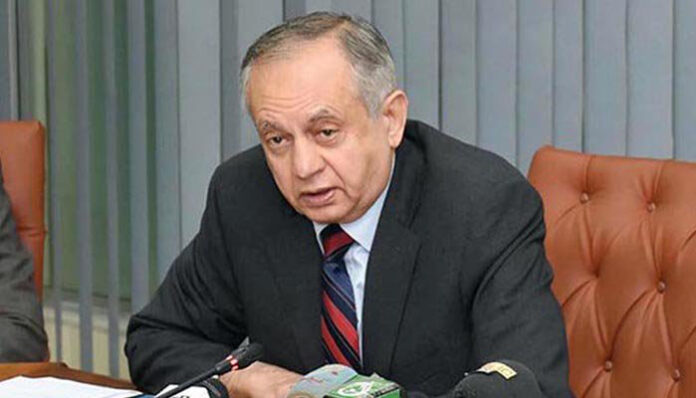ISLAMABAD: The government is set to unveil an ambitious Textile and Apparel Policy 2020-25 by next month as consultation for finalizing the policy has almost been completed. This was claimed by Advisor to the Prime Minister for Commerce and Investment Abdul Razaq Dawood during a media briefing here on Thursday.
The proposed policy, which will be the third such policy, which is aimed at increasing the textile and clothing exports to a minimum of $15.7bn and a maximum of $20.8bn by end of the year 2025.The policy was facing delay for various technical issues including the revenue implications of tariff concessions, energy rates etc. One of the major recommendations of the textile division is the restoration of the zero-rated regime for the five export-oriented sectors. The facility was withdrawn in the year 2019.
However the adviser claimed that the technical hurdles were addressed and the consultation process with stakeholders was also completed. He said the textile industry had performed well this year and is investing heavily in new technology and capacity expansion taking advantage of the cheap credit made available under the SBP’s Temporary Economic Recovery Facility (TERF).
In reply to a query, the adviser also claimed that another long awaited new trade policy, the draft policy on Strategic Trade Policy Framework (STPF) 2020-25, has also been submitted to ECC for approval. The ECC would also approve the policy soon, he said. Under the proposed STPF, a three-tier institutional mechanism is proposed for the resolution of sector-specific problems. It is believed that new mechanisms will help facilitate exporters to overcome their problems.
Earlier while briefing about the historic growth in exports, the adviser informed that export of goods grew by 18 % to $ 25.3 billion during FY 2020-21 which is the highest ever in the history of Pakistan. The exports in June 2021 were also the highest in any month in our past, at $ 2.7 billion. The exports of Services for the year is projected to be $ 5.9 billion. The cumulative exports of Goods and Services during FY 2021 will therefore cross $ 31 billion.
The Adviser to Prime Minister on Commerce and Investment, Mr. Abdul Razak Dawood said that “This is a remarkable achievement by our exporters considering the difficulties created by COVID-19 at home and resultant contractions in our major markets. It was not an easy task as many countries went into lockdown, and severely affected the business. Not only our exports survived the crisis but also we have enhanced it in many sectors. I salute our exporters on achieving the milestone.”
The Ministry of Commerce (MOC)’s Tariff Policy Board was formed under the National Tariff Policy with the major objective to improve the competitiveness of the Industry through gradual reduction of Customs Duty (CD), Additional Customs Duty (ACD), Regulatory Duty (RD), time bound tariff protection to strategic & import substitution industries and simplification of tariff structure and procedures.
Since 2018-19, tariffs on more than 4000 inputs (i.e. raw materials, intermediate and capital goods) have been rationalized. As a result, almost 40% of total inputs in terms of number of tariff lines as well as value of imports are at 0% duty. This has improved competitiveness of the industry witnessed in 13% growth in LSM and 17% increase in exports despite COVID pandemic.
In the current budget 2021-22, major rationalization in textile value chain, iron & steel raw materials for all kind of flat products, pharmaceutical raw materials, machinery & equipment, inputs for footwear, glass, poultry, food processing industry would further lead not only to revival of industrialization in the country but also enhanced exports. With the current measures exports are expected to grow by 5% in the next two years.
Tariff rationalization efforts in the last two & a half years have brought the trade weighted average tariff of Pakistan down from 9.07% in 2018-19 to 7.07% in 2021-22. Thus bringing tariffs at par with the regional competitors, reducing the cost of manufacturing, generating employment, attracting new investment, and enhancing consumer welfare.
Tariff reforms will continue in the coming years. It is planned to study, analyse and reform tariff structure of the agriculture and transport & logistics sectors next year. Time bound & phased out protection to import substitution industry, further reduction in overall tariff including CD, ACD & RD and simplification of tariff structure will continue.




